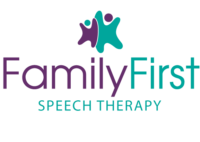Hi there! Following our recent posts on oral rest position (what it is and why it’s important), excessive habits (such as thumb sucking), and tongue thrusts, today we’re going to talk about Orofacial Myofunctional Therapy and what it can do to help with those habits and tongue thrusts + support (or restore) a proper oral rest position.
Alrighty: Orofacial Myofunctional Therapy involves exercises to help retrain and build the strength and coordination of muscles in your face and tongue. So say you’ve got a kiddo with a tongue thrust and it’s impacting their oral rest position (when you’ve taken a look, you’re noticing they’re breathing through their mouth and keeping their lips open a lot of the time), some of the therapy exercises could help them learn where their tongue actually needs to be (which would help correct their oral rest position and nasal breathing — which are important for overall health and development)!

Some other goals of Orofacial Myofunctional Therapy include:
-Tongue where it needs to be: up/proper palatal tongue rest position
-Lip seal at rest
-Correct excessive habits (finger sucking, hair eating, nail biting, etc.)
-Back teeth together when swallowing
-Proper chewing and drinking (no food falling out!)
-Nasal breathing (rather than mouth breathing) — more on why this is so important in an upcoming post!!
If your kiddo is struggling with an oral myofunctional disorder (like a tongue thrust), a Orofacial Myofunctional Therapist might be helpful to check in with. A neat thing — in some cases, there may be exercises you can do at home to help! (Like this exercise: Tongue to Spot.)
And if you’re wondering if this sort of support could be useful (or if your child has a habit that isn’t helping them), hop on my calendar for a complimentary consultation to see what’s up and talk through possibilities.

